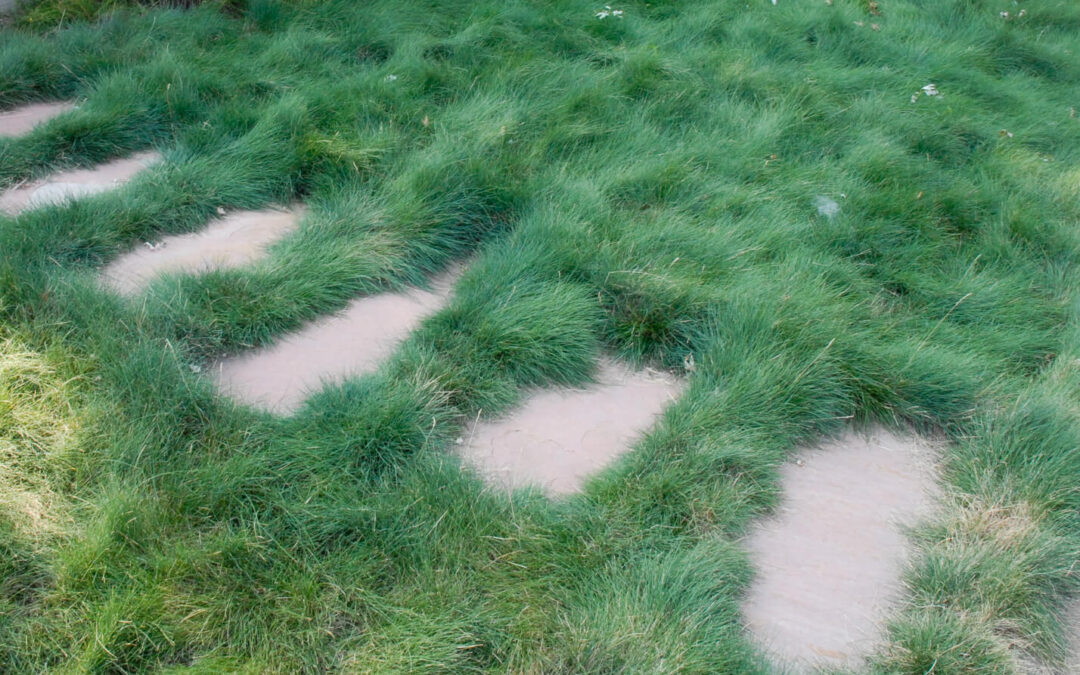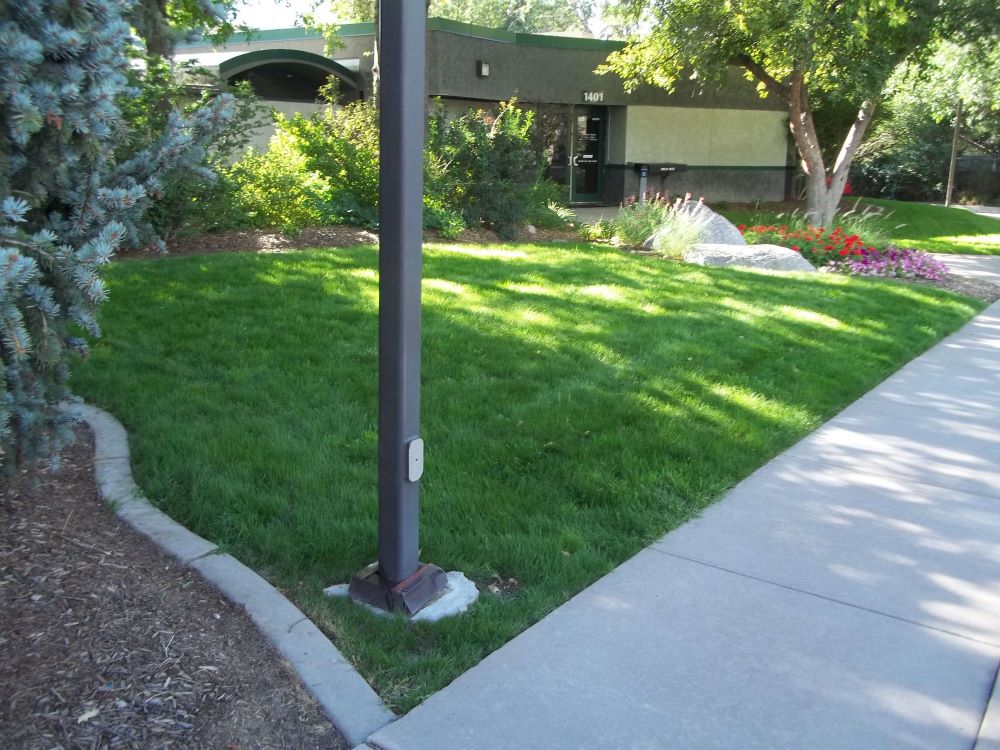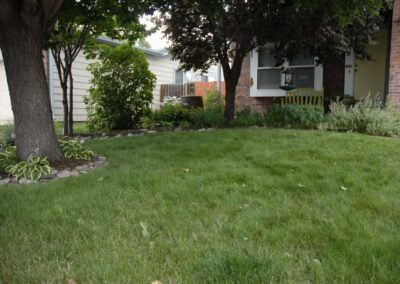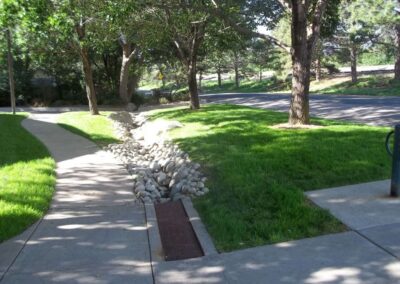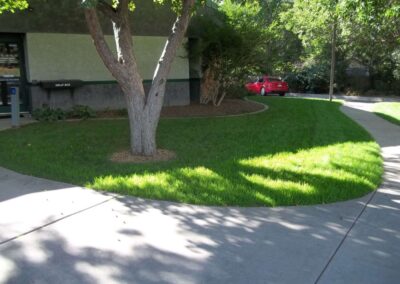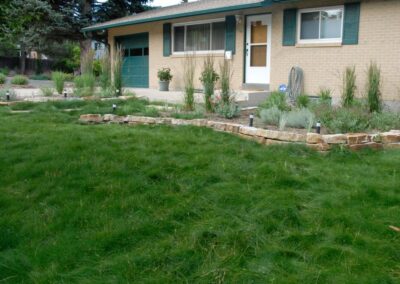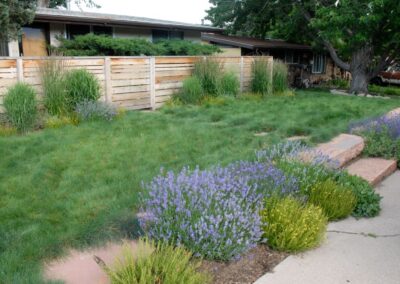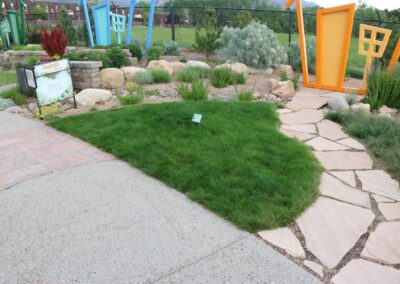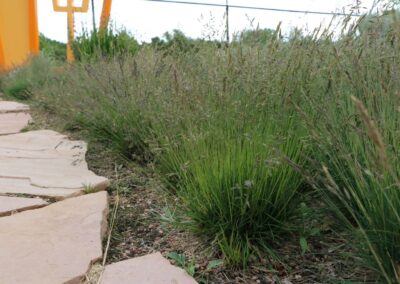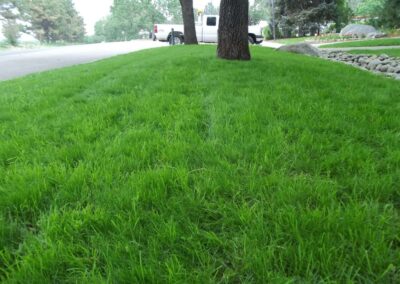Fine Fescue
Festuca spp.
Fine fescues can be a shade-tolerant solution for moderate water savings.
Active Growth
April-November
Light Needs
Sun, Part Sun, Shade
Origin
Introduced
Best For:
- Landscapes under large shade trees
- Informal landscapes that can be left unmowed
- Varied soils
- Lawns
Not Suited For:
- Very hot, sunny landscapes
- Heavy-use areas
- Upright grass appearance
- Areas where rapid growth is required
- Landscapes that will need to be mowed short frequently
Tolerates: Mixing with wildflowers, shade, rocky/gravely soils and temporary drought.
Irrigation need (FRONT RANGE)
No Irrigation
Turf Irrigation
Water Use: Water once to twice per week after establishment to maintain a green appearance
Using Fine Fescue
Fine fescues are a good choice for shady areas and and can grow well at higher elevations (up to 7,000 feet). They are a group of similar-looking species that are often used in traditional turf grass settings. Fine fescues will not grow well under evergreen trees like spruces and pines. They turn green in early April and brown in late October, growing best in cool spring weather. Fine fescues aren’t tolerant of foot traffic, so they’re best suited to front yards or areas where people and pets don’t walk repeatedly.
Fine Fescue Attributes
- Bunch-type, cool-season grass
- Dark green or blue in color
- Fine/thin grass blades
- Leaf height of 6-12 inches
- Can provide a uniform stand of grass but will be less dense at ground level
- Mix well with wildflowers
- Blades of grass may lay down if left long and have a “floppier” appearance
- Require half the fertilizer compared to Kentucky bluegrass
Installating Fine Fescue Grass
- Installed as seed
- Ideal seeding time is August 1 through September 1.
- Should be seeded at a depth of 0.25 inches; seeding too deep can result in poor germination
- Seeding rate for landscape projects is 1.5 to 3 lbs per 1,000 square feet of area
- Cultivars and notes:
- Hard fescue and sheep fescue are more drought tolerant than other species along Colorado’s Front Range
General
Fine fescue can show signs of germination quickly (as little as five days after seeding), however seedlings are slow to mature and fill in.
Weed Management
Use herbicides safe for cool-season grasses, labeled for for use on fine fescues. Proactive weed management during establishment is highly recommended and will result in healthy grass stands with minimal weed issues over time.
Watering for Establishment
It’s important for uniform, successful germination that the soil is kept moist until seedlings emerge. In the first three weeks, keep the soil consistently moist but avoid runoff and pooling. In weeks four and five, moisten the soil daily to prevent new seedlings from dehydrating. Fix any irrigation problems as quickly as possible to prevent seedlings from drying out and dying.
Fertilizer During Establishment
Fertilizing new seedling stands helps them grow quicker so that their leaves fully cover the soil. Add a starter fertilizer at seeding to provide nutrients for the new grass.
Mowing During Establishment
Fine fescues take time to recover from mowing. During the establishment phase, mowing may not be needed. If the grass grows tall enough to look unsightly or cause concern, mow it as high as possible, ideally so the grass is four to six inches tall after mowing. Mowing can be beneficial to help manage taller weeds in new plantings.
Long-Term Watering
Fine fescue species require 18-20 inches of water per season on average (April through October). Once established, water twice per week in midsummer and once per week in early spring and late fall for moderate water savings compared to turfgrass. Fine fescue performs best with monthly winter watering from November through April.
Mowing
Fine fescues recover slowly from mowing, especially during midsummer heat, and should be mown infrequently.
Weed Control
Long-term weed control keeps grass healthy and attractive. Ideally, with proactive weed control early in the project, long-term weed control efforts can be minimal: spot-spraying troublesome plants. Pre-emergent weed control products can help prevent new weeds from growing—however, since they’ll also prevent new grass seed from germinating, only use them in established grass stands where you aren’t planning any overseeding or germination of additional grass seed.
Identify the weed species appearing in the area and include specific weed-control strategies for those types of weeds. Only use products labeled as safe for fine fescue grasses.
Fertilizing
Fine fescue grass areas can be fertilized less often than traditional lawns. Apply nitrogen at 1 to 2 lbs/1000 square feet of area for the growing season in spring and fall.
Start your project
Discover how to plan an implement a native grass project for long-term success.
